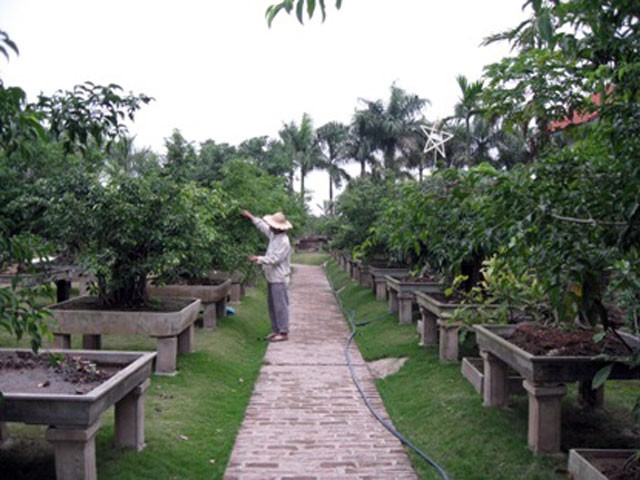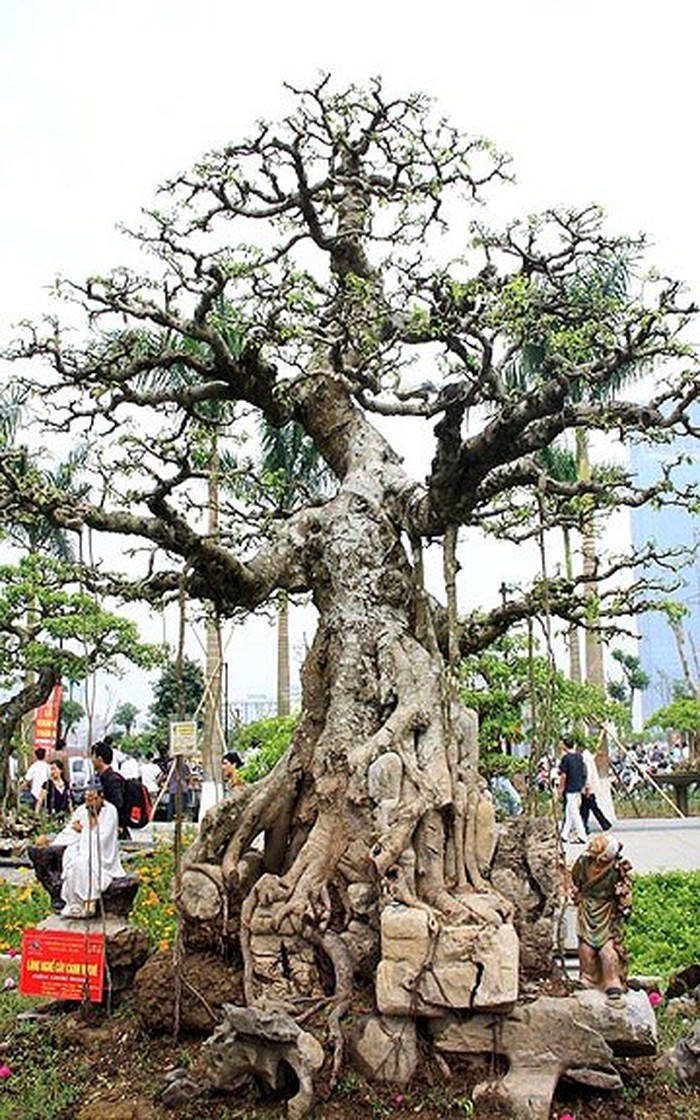(VOVWORLD) - The 800-year-old craft village of Vi Khe located on the Red River in Nam Dinh province is considered the cradle of Vietnam’s horticulture tradition. The village takes pride in its ornamental trees and bonsais which are pruned meticulously and artistically. Vi Khe is a principal supplier to markets across Vietnam, especially during Tet, the Lunar New Year holiday.
|
 The village pathway is surrounded by ornamental trees and bonsais. The village pathway is surrounded by ornamental trees and bonsais.
(Photo: tintucnamdinh.vn)
|
In 1211 General To Trung Tu, a mandarin in the reign of Ly Cao Tong, taught Vi Khe villagers how to grow ornamental trees and flowers.
Nguyen Van Ri, caretaker of the village communal house, recalls: “In the communal house, villagers worship two mandarins – Ngo Quyen who defeated foreign invaders in 938 and To Trung Tu, a general of Grand Prince Hung Dao. General Tu came to visit Vi Khe and taught a variety of farming techniques to the village, including the art of growing ornamental trees and flowers. For eight centuries Vi Khe has preserved this traditional craft.”
Today, along the road leading to the village are houses surrounded by ornamental trees and bonsais. Each tree reflects the style of its gardener.
Visitors admire the ingenuity of local artisans in pruning the shapes of birds, the One Pillar Pagoda, the Temple of Literature, or the Pho Minh Tower into their trees.
What was once a hobby in the village has become a lucrative business. Nguyen Van Chien, head of the village bonsai club, said: “Almost every household in the village is engaged in horticulture in addition to growing rice. The villagers’ main income is from their flowers and ornamental trees.”
Each shape symbolizes a value of the ancestors’ philosophy truth, goodness, or beauty, for example.
People interested in loftiness may choose a tree with a “hac lap” (self-reliant crane) shape which symbolizes strong will. Some may prefer the “truc sieu” (formal upright) shape. Those who prefer the qualities of morality and dignity may like trees representing “phu tu” (father and son) or “mau tu” (mother and baby).
 A hundreds-of-years old tree has formal upright shape and belongs to Pham Hai Anh in Vi Khe village. (Photo: VOV) A hundreds-of-years old tree has formal upright shape and belongs to Pham Hai Anh in Vi Khe village. (Photo: VOV) |
Nguyen Van Giang, a young Vi Khe artisan, says infusing soul into the ornamental plants, takes a lot of time and effort. Turning them into works of art requires a combination of plants, stones, water, and decorative objects.
“To turn out a beautiful ornamental tree, first you must provine a branch, which often takes about 3 months, followed by re-planting it in soil for 4 months. When the tree is growing well, curving and shaping begins. Sometimes it takes 4 to 5 years to complete an ornamental tree,” said Giang.